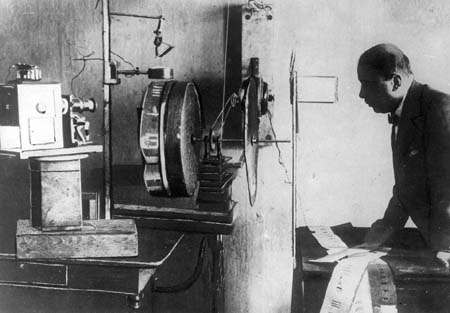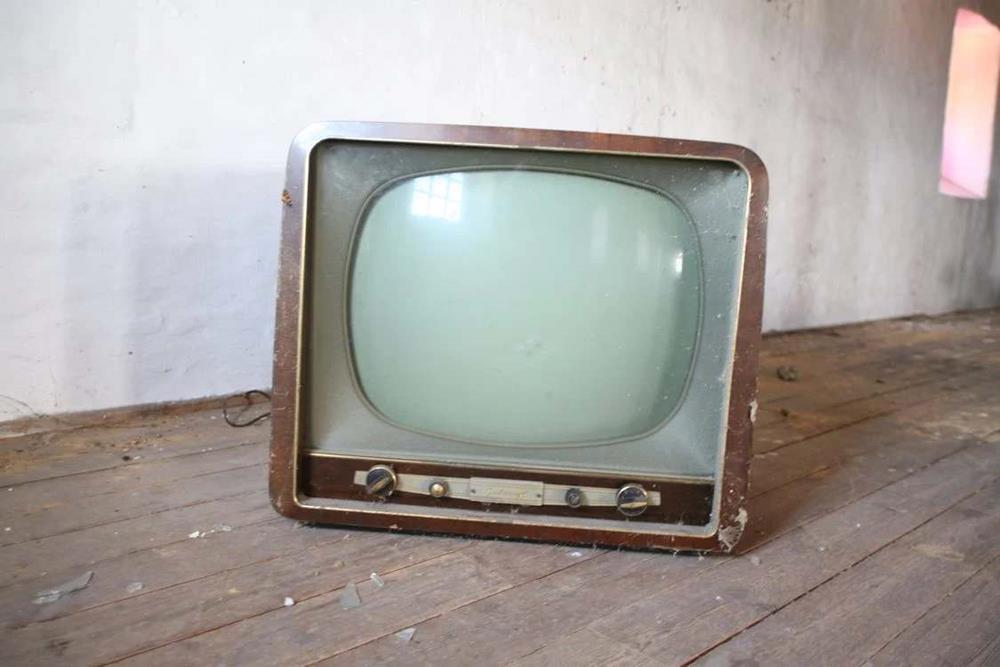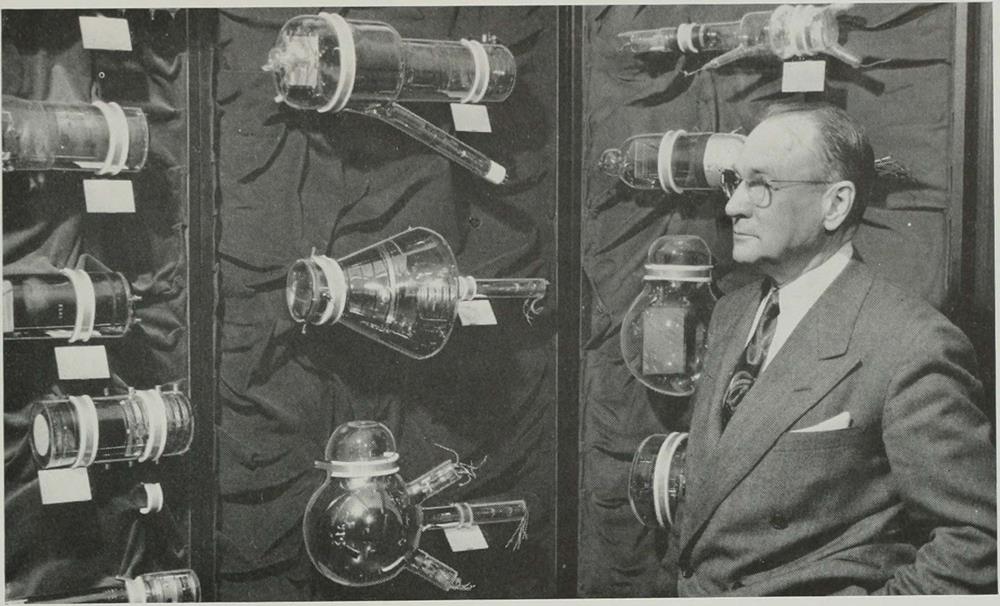There was a time in history when TV sets did not have color. People were still entertained by watching black-and-white television shows, but producers and directors weren’t able to showcase their concepts or ideas properly since they couldn’t showcase the colors they used in the studio to the television screen. Thankfully, color TV would eventually be invented, and this invention forever changed the television industry. To know more about who invented the game-changer in the TV scene, here is a brief history of color TV.
Origins
Unbeknownst to many, color TV is already being experimented with right at the same moment as black-and-white television was invented. One of the first proposals that were presented for color TV was developed by Maurice Le Blanc in 1880. However, the proposal did not contain any concrete details about how the machine would work, although there were documents that were pertaining to the line and frame scanning capabilities of the television.
The second known proposal was developed by Jan Szczepanik, a Polish inventor who is also known for inventing the wireless telegraph. In the said inventor’s proposal that was written in 1897, the machine would have a selenium photoelectric cell located at the transmitter, an electromagnet that controls the oscillating mirror on the TV, and a moving prism at the receiver to produce colors. Unfortunately, the television conceptualized by Szczepanik lacked a specific part that would read or analyze the moving prism’s colors and transfer them directly to the screen.
The first person claiming to have invented color television was Armenian inventor HovannesAdamian, who applied for a patent for his color television on March 31, 1908, in Germany. Today, Adamian is considered one of the founders of color TV.
A Scottish inventor named John Logie Baird improved upon Adamian’s patent by utilizing several scanning discs that will be able to analyze colors at the transmitting and receiving ends of the machine. Along with the scanning discs, the machine also has three spirals of apertures that each contain one of the three primary colors and three light sources to amplify the brightness of the screen.
To showcase what Baird’s television was capable of, on July 3, 1928, he and his team recorded footage of a girl that is seen wearing three hats with different colors. The girl in the footage was Noele Gordon, a young actress who would eventually star in the iconic television soap opera in Britain titled Crossroads from 1964 to 1983.
Electronically-scanned Color Television
The Radio Corporation of America, or RCA, was the company that invented the first electronically scanned color television system as a result of trying to enhance the picture quality of color TV. RCA’s color TV was first presented at their plant in Camden, New Jersey, on February 5, 1940, in front of several members of the US Federal Communications Commission (FCC). Although it was a successful presentation, the RCA color TV was deemed unmarketable because it cost three times as much as a standard black-and-white television.
An electromechanical system for the color TV was invented in 1939 by a Hungarian engineer named Peter Carl Goldmark, who was working for CBS during that time. Goldmark’s color TV was equipped with an Iconoscope sensor that is able to analyze colors produced by mechanical discs that house three filters that have the colors red, blue, and green. This iteration of the color TV was then presented to the FCC on August 29, 1940 (a few months after RCA demonstrated their color TV), and it was subsequently shown to the media on September 4, 1940.
When Goldmark’s color TV was approved by the FCC, CBS began conducting color field tests on August 28, 1940, and they also tried experimenting on live cameras on November 12. CBS then aired daily color field tests starting on June 1, 1941, but since most people owned black-and-white television sets at that time, the field tests were not applied to the public.
FCC Color Television
After World War II, the Federal Communications Commissions were bombarded with hundreds of applications for companies to create their TV stations. Because there was limited space when it came to stations, the FCC started looking for ways to extend the space for color TV broadcasts.
The FCC called upon several TV stations to present their own color systems in 1948, and these demonstrations were conducted and reviewed by the Joint Technical Advisory Committee or JTAC. Among those included in the demonstrations was CBS, who introduced an improved version of their color TV that uses a single 6 MHz channel with 405 lines of resolution. Because of the advancement of the CBS color TV system, they were able to beat other companies in the demonstrations, with some of those companies including Color Television Inc. (CTI) and Philco.
RCA was invited to demonstrate a rumored dot-sequential system TV that they are developing, but they refused to show their creation during the demonstrations. Before JTAC was able to present CBS as the winner of the demonstrations, RCA finally revealed its color TV system on August 25, 1940. Although RCA was able to show their system first, the JTAC decided to push through by recommending CBS to be the main company allowed to broadcast in color.
The CBS color broadcasts started on June 25, 1951, although there were only a few viewers who were able to tune in to the channel because most television sets did not have a special adapter that would allow them to view the color broadcasts. Even though CBS was able to find a manufacturer to produce TV adapters for them, the company was forced to discontinue its color television system on October 20, 1951, due to the depletion of funds and lack of profits.
NTSC Color Television
Before CBS began its color broadcasts, the National Television System Committee (NTSC) was reformed around the early 1950s to develop its own color TV system that is compatible with black-and-white television sets. The NTSC then partnered with RCA, who provided the hardware, to create the system that was then publicly shown at the WNBT station in July 1951.
After CBS confirmed in 1953 that it was no longer pursuing developing and manufacturing its color system, the NTSC was able to manufacture receivers for color broadcasts, as the National Production Authority lifted its ban that prohibits television companies besides CBS from manufacturing or producing color systems.
Although color TV was owned by more than 10 million people by the 1950s, the machine was not yet fully realized since networks would still need to provide a special adapter for the televisions to broadcast their channels. Thanks to the advancement of technology, color TVs were able to broadcast almost all color channels or stations by the 1960s, which resulted in the boom of color TV in the 1970s.
LCD Television
The story of the LCD TV begins with a foundation laid in the early 20th century, though the technology as we know it today took its first recognizable shape in the 1960s. George Heilmeier, working at the RCA laboratories, unveiled the first liquid crystal display (LCD) in 1968, a development that would later revolutionize the way we view content in our homes and beyond. This initial breakthrough led to the creation of small, portable devices such as calculators and digital watches, showcasing the potential of LCD technology for broader applications.
However, it wasn’t until the 1980s and 1990s that advancements in LCD technology would make the leap toward larger displays suitable for television. Sharp Corporation took a leading role in this evolution, introducing the first 14-inch color LCD TV in 1988. This was a crucial milestone, demonstrating that LCD technology could be applied to larger screens, although the high cost and technical limitations meant that widespread adoption was still years away.
The turn of the millennium marked a period of rapid growth and improvement for LCD TVs. Manufacturers around the world, including Sony, Samsung, and LG, invested heavily in refining the technology, focusing on enhancing picture quality, increasing screen size, and reducing production costs. By the mid-2000s, LCD TVs began to outsell traditional cathode ray tube (CRT) TVs, signifying a major shift in consumer preference and the beginning of the LCD TV’s dominance in the market.
Key to this transformation was the introduction of thin-film transistor (TFT) technology, which allowed for better color accuracy, sharper images, and wider viewing angles. Additionally, the advent of high-definition (HD) content pushed consumers to adopt LCD TVs, which were drawn by the promise of crisper, more vibrant images that traditional TVs could not provide.
LED and OLED Television
The story of LED (Light Emitting Diode) TV technology began in earnest in the 1960s, although the foundation was laid much earlier, with the discovery of the electroluminescent principle in 1907 by British experimenter H.J. Round. However, it wasn’t until 1962 that Nick Holonyak Jr., an engineer at General Electric, developed the first practical visible-spectrum LED. His work paved the way for the use of LEDs in a variety of display applications. Despite these early developments, LED technology initially found limited applications in digital watches, calculators, and test equipment due to its high cost and low light output.
The leap to television screens began in earnest with the advent of LED-backlit LCD TVs in the late 2000s. These displays combined the established liquid crystal display (LCD) technology with LED backlighting, offering improved color contrast, energy efficiency, and thinner profiles compared to their CCFL (Cold Cathode Fluorescent Lamp) backlit predecessors. Samsung introduced one of the first LED-backlit TVs in 2009, signaling a shift towards sleeker designs and better overall picture quality.
On the other hand, OLED (Organic Light Emitting Diode) technology, which offers self-illuminating pixels without the need for backlighting, began carving its niche in the TV market slightly later. The concept of organic light-emitting diodes was first introduced by Ching W. Tang and Steven Van Slyke in 1987 at Eastman Kodak. OLED technology promised even thinner displays, superior contrast ratios, and more vivid colors compared to LED-LCD screens. The first OLED TV was presented by Sony in 2007, albeit with a modest 11-inch screen size. It wasn’t until 2013 that large-scale OLED TVs became more accessible to the consumer market, thanks to companies like LG pushing the boundaries of this technology.
Interesting Facts About the Color TV
The television is an essential part of every household. Even though mobile phones, tablets, and computers have gained popularity, television has been a source of entertainment for decades. Here are some interesting facts about color television:
Color television was initially more expensive
When color television first became available, obviously, it was much more expensive than black and white televisions. The first color TV for consumers (a 15-inch screen, RCA CT-100 TV set) was sold in 1954 for $1,000, which is worth $11,033 today. That’s more than enough to pick a 50 to 60-inch plasma screen of up to 16 times the screen area of the 1954 model. This limited its initial adoption, but prices eventually came down as the technology became more widespread.
Color television broadcasts were limited at first
The first color TV broadcasts were limited in scope and were only available in a few cities. The first national color broadcast in what was called “living color” was the 1954 Tournament of Roses Parade in Pasadena, California.
The first color TV show premiered in 1951
In 1951, CBS produced a TV show called “Premiere,” which is widely considered the first color TV transmission.
The first color cartoon programs were screened in 1962
“The Jetsons” and “The Flintstones” were the first cartoon series to be screened in color. Both these shows premiered in 1962.
There was another claimant to the title of “Father of Television”
Hovhannes Adamian might be recognized as one of the founders of color television because many others worked to make it possible.
Another pioneer of television technology was Russian inventor Vladimir K. Zworykin, who invented a television with a transmitting and receiving system that uses cathode ray tubes for color transmission. He patented a color TV system in 1925, and it was applied in 1928. Notably, Zworykin worked for RCA, which would eventually popularize colored television among the masses. However, it was not until the 1950s and 1960s that color television became widely available to the public.
The credit for color TV often goes to a Scotsman
John Logie Baird was the Scottish inventor who demonstrated the world’s first live working TV system in 1926. He publicly showed color TV systems and the first viable, purely electronic color television picture tube. The credit for the first color TV often goes to him, as he was the inventor who showed his progress to interested crowds. After his success in building a black-and-white color TV, he started working on building a color TV soon after. However, economic pressures limited his progress.
By 1941, Baird was able to build a prototype that used a color wheel to add colors to images. Though color TV would not catch on until the 60s, his system would form the basis for many appliances in the years to come.
Walt Disney World of Color debuted in 1961
Disney went in color in September 1961, when it introduced Ludwig Von Drake in the first episode of Walt Disney’s Wonderful World of Color in a cartoon called “An Adventure in Color.” NBC was the only network broadcasting in color by then, but fortunately, Disney had filmed almost all the episodes of the anthology in color, so NBC’s new format meant they could air old favorites in color.
Color television was slow to be adopted by the television industry
Despite its potential, the television industry has been slow to adopt color television. This was mainly due to the high cost of producing color programming and the limited availability of color TVs. It was in the late 1960s and early 1970s that color television became the dominant form of television in the United States.
Daytime soap operas were some of the last shows to appear in color
As many TV shows began premiering in color, daytime soap operas were still primarily black-and-white. It was only in 1967 that most soap operas went in color, including As The World Turns (1956-2010), Guiding Light (1952-2009), Search for Tomorrow (1951-1986), Edge of Night (1956–1984), Love of Life (1951-1980), and General Hospital (1963-present).
The Korean War halted the production of color TVs
The manufacture of color TVs was halted during the Korean War because of the scarcity of metals needed for the war. These metals were also materials required to produce color TVs.
NTSC was the first color television system
The first color television system was called NTSC (National Television System Committee). This system was developed in the United States and was used to broadcast color television in North America.
In addition to NTSC, there were other color television systems that were developed and used in different parts of the world. For example, PAL (Phase Alternating Line) was used in Europe, and SECAM (Sequential Couleur Avec Mémoire) was used in France.
The world’s biggest TV is a whopping 370-inch screen
Television has primarily evolved – from black-and-white to color and from large and bulky to flat and wide-screen devices. In 2014, a British manufacturer, Titan Screens, unveiled the world’s most giant TV, which was named The Zeus. The device measures a full 370 inches diagonally, and it’s a custom-made TV since no factory in the world can pump out that giant-sized TV. If you can’t imagine it, this TV’s about four times as big as an elephant.
The world’s largest OLED TV clocks in at 97 inches
In 2022, LG unveiled the largest OLED TV at 97 inches, which can take over an entire living room. This creation is currently the biggest TV sold commercially.
Conclusion
Today, the color TV stands as a cornerstone of global entertainment, constantly evolving with the latest technological strides. As we look back on the milestones achieved, it’s clear that the drive to enhance how we view content has never waned. This story, rich with innovation and perseverance, not only highlights the past but also lights the way for future advancements in television technology.






